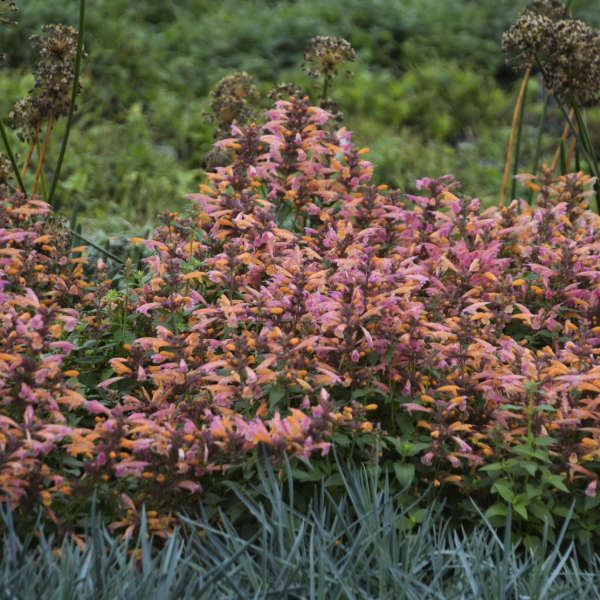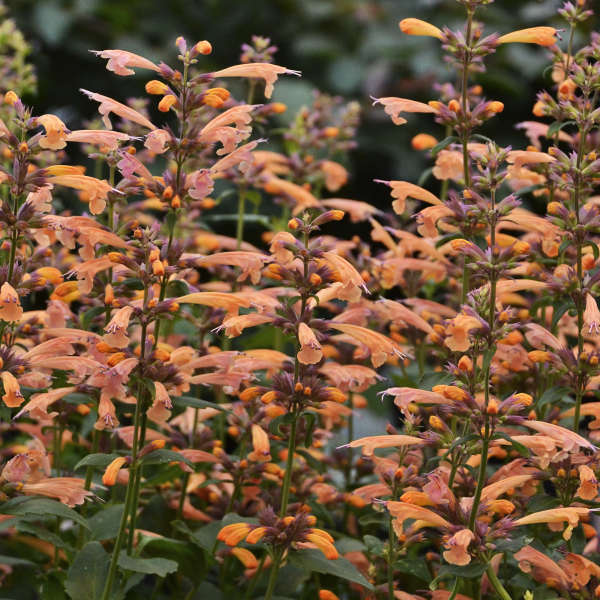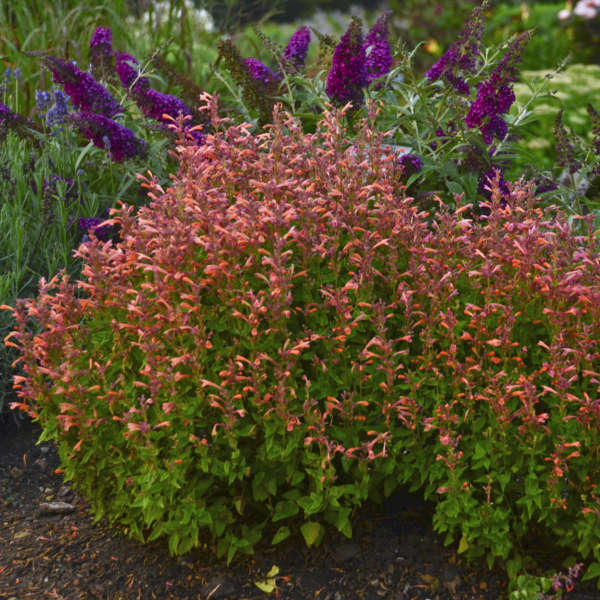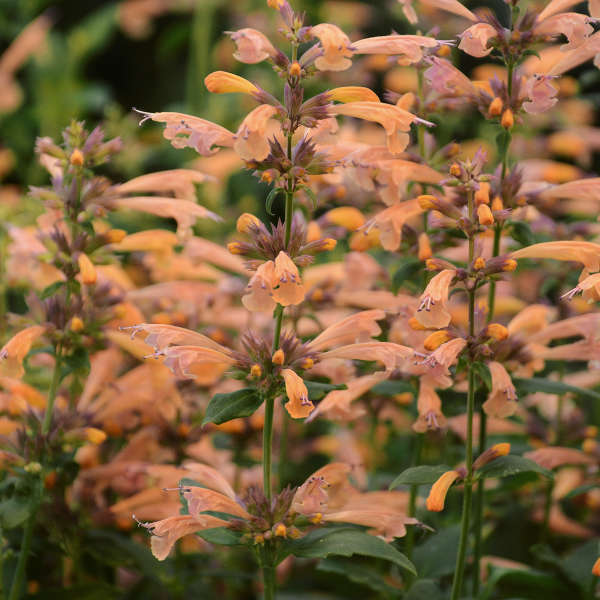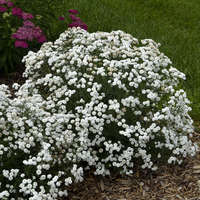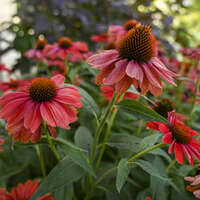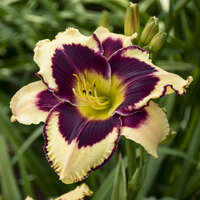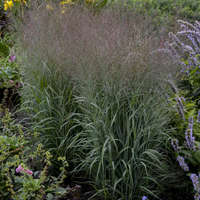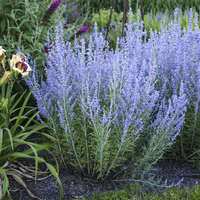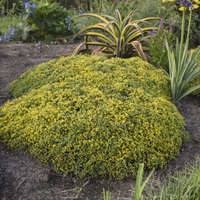Agastache 'Mango Tango' PP28747
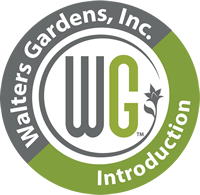
Common Name: Anise Hyssop
Selected for its shorter habit, ‘Mango Tango’ will also impress you with its vibrant flower color. Individual flowers have dusky rose calyxes and light peach to dusky orange flowers, giving this plant an overall red-orange color. Flowers cover the top ¾ of the plant. This compact plant has aromatic, medium green foliage.
Agastache are well-adapted to thrive in dry soils and is right at home in rock gardens and xeric container plantings where it will attract hummingbirds, butterflies, and honeybees. This is one of the easiest perennials to grow.
30ct Plug Tray |
72ct Plug Tray |
